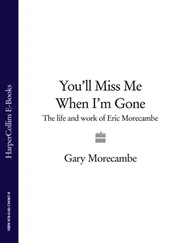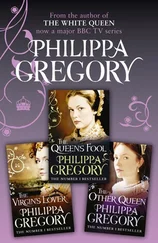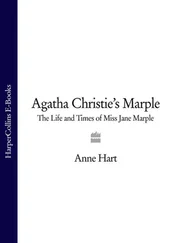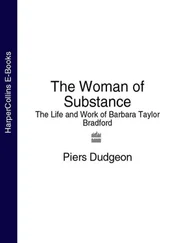Having broken the code, the tables yielded up the secrets they had hoarded for five hundred years. Unfortunately these proved uninformative: besides one or two gnomic phrases, the remainder of the plain text seemed unintelligible. This may be because the plain text is itself encoded in some further way, or because the tables became corrupted over years of underground circulation in manuscript form. Nevertheless, the discovery of the true purpose of Book III of the Steganographia was a breakthrough, because it proved for the first time that it was primarily a work of cryptography, not magic.
But whether Dee realised that the Steganographia was a code book remains unclear. He may not have seen the Clavis, the key to Books I and II. So, when he so excitedly commended the work to William Cecil as ‘meeter’ (more suitable or useful) and ‘more behoveful’ (more beneficial) to ‘your honor or a Prince’ (Queen Elizabeth) than any other, what did he mean? Spiritual communication is a possibility – but unlikely. Cecil was both very practical and conservative, and, though he undoubtedly accepted the existence of spirits, was unlikely to have been persuaded to practise the elaborate rituals Trithemius described. 20
Dee was fascinated by, and evidently expert in, cryptography. He owned several copies of Trithemius’s Polygraphia, which was explicitly about codes, and studied other key texts on the subject, notably Jacques Gohorry’s De Usu et Mysteriis Notarum and Jacopo Silvestri’s Opus Novum, the latter of which Dee used to practise writing in cipher for himself. 21 Thus, when he promised Cecil that the book would advance the ‘secret sciences’, he was not necessarily referring to the occult. When Dee sent his letter, Cecil was just beginning to put in place the espionage network which, under Francis Walsingham, his successor as spymaster, would become one of the most formidable and effective in Europe. This network came to rely heavily on codes. 22
Dee did not see the Stegonographia as merely a political or diplomatic tool, considering the text to have other, more esoteric uses. Cryptography, particularly of the sort practised by Trithemius, was closely connected to the Cabala and it was conceivable that the same techniques used in the Steganographia could be used to decipher other texts written in forgotten or corrupted languages. One that would arouse particular excitement was called The Book of Soyga, an anonymous tome which Dee came to believe contained an ancient message written in the language originally spoken by Adam – in other words the true, unspoiled word of God. Another was a mysterious volume attributed to Roger Bacon which in coming centuries became notorious among cryptanalysts as the Voynich Manuscript. 23 It has yet to be deciphered. The study of codes, which was also the study of the structure of language, might yield the magic key to decoding such texts and revealing the messages they contained.
Beyond even that, Dee commended the Steganographia to Cecil as an example of the intellectual treasures the Continent held and that England so conspicuously lacked. In his letter, he deplored the lack of an English philosopher able to produce works ‘in the Science De Numeris formalibus, the Science De Ponderibus mysticis, and ye Science De Mensuris diuinis: (by which three, the huge frame of this world is fashioned…)’. His travels, learning and access to rare texts and Europe’s leading thinkers meant that he could be just such a philosopher, opening up the riches of the Renaissance to the English court.
During his stay in Antwerp, Dee wrote:
‘When infancy and childhood are past, the choice of a future way of life begins to present itself to young men as a problem. Having hesitated for some time at the crossroads of their wavering judgment, they at last come to a decision: Some (who have fallen in love with truth and virtue) will for the rest of their lives devote their entire energy to the pursuit of philosophy, whilst others (ensnared by the enticements of this world or burning with a desire for riches) cannot but devote all their energies to a life of pleasure and profit.’ 1
From this earnest assessment, it is clear in which direction Dee imagined he would go. But when he decided to return to England after his lengthy Continental tour, he was to find the choice not as clear-cut as he had assumed.
He arrived at Greenwich Palace on 14 June 1564, accompanied by the Marchioness of Northampton and a slender volume entitled Monas Hieroglyphica, ‘The Hieroglyphic Monad’. The marchioness had arrived in Antwerp in April, as Dee was preparing to come home. She had breast cancer, and was there hoping to benefit from the more advanced medical knowledge found in the Low Countries. Dee offered to accompany her back to England, and in return she promised to reintroduce him to the court.
The first thing he did was show Elizabeth the Monas. He considered it his most important work to date. He said that he had felt ‘pregnant’ with it for seven years, then written it in a fit of intellectual and mystical rapture in just twelve days.
For a man once arrested for ‘calculing’ and still arousing suspicion because of his interest in the ‘uncanny arts’, the presentation of such a work as the Monas to the Queen was risky. It was filled with magical ideas, deeply influenced by Continental thinking, dangerously preoccupied with what churchmen, both Catholic and Protestant, considered pagan matters, combining numerology, the Cabala, astrology, cosmology and mathematics. This may explain why Dee decided to dedicate it not to Elizabeth, but the newly-crowned Holy Roman Emperor, Maximilian II, nephew of Charles V of Spain. As Dee had discovered during a stay the previous year at the Emperor’s court in Bratislava, Maximilian was both broad-minded and interested in the sorts of ideas the Monas explored. Dee had no guarantee that Elizabeth would show such an attitude.
His decision to present the work to her could be seen as a sort of test, a way of seeing whether his homeland was ready for the philosopher skilled in the science ‘ De Ponderibus mysticis’ that he had told Cecil England lacked and which he had now become.
Elizabeth’s response was encouraging. Intrigued, if baffled, by the Monas, she promised to become Dee’s ‘scholar’ if he disclosed ‘unto her the secrets of that book’. 2 The two of them sat together ‘perusing’ the mysterious work; queen and subject, pupil and master, magician and apprentice. She became, he later proclaimed, a ‘sacred witness’ of its secrets. 3
The title refers to a symbol or hieroglyph. The same symbol appeared on the title page on the Propaedeumata. Like the Propaedeumata, Monas comprises a series of theorems. But there the similarities between the two works end. Where the Propaedeumata is about observation and experimentation, the Monas rather arises from pure thought and mystical intuition.
A clue to its meaning is contained in a question posed in Dee’s dedication to Maximilian:
Is it not rare, I ask, that the common astronomical symbols of the planets, instead of being dead, dumb, or, up to the present hour at least, quasi-barbaric signs, should have become characters imbued with immortal life and should now be able to express their especial meanings most eloquently in any tongue and to any nation? 4
It was ‘as if in an age long past they had been the same, or as if our forefathers had wished that in the future they would be such’.
In other words, Dee thought that the ‘astronomical’ symbols were relics of a lost universal language that transcended national and, by implication, religious barriers. The aim of the Monas was to test this hypothesis by looking for suggestive structures within the symbols themselves. What Dee claimed to have discovered, the ‘very rarest thing of all’, was that all the symbols could be combined into one, a variant on the sign for Mercury. This symbol formed the central motif of the Monas, exemplifying the unity of the universe.
Читать дальше












